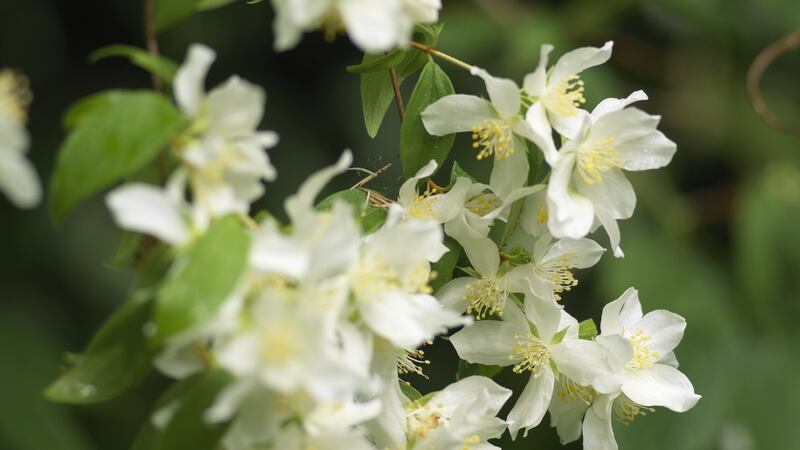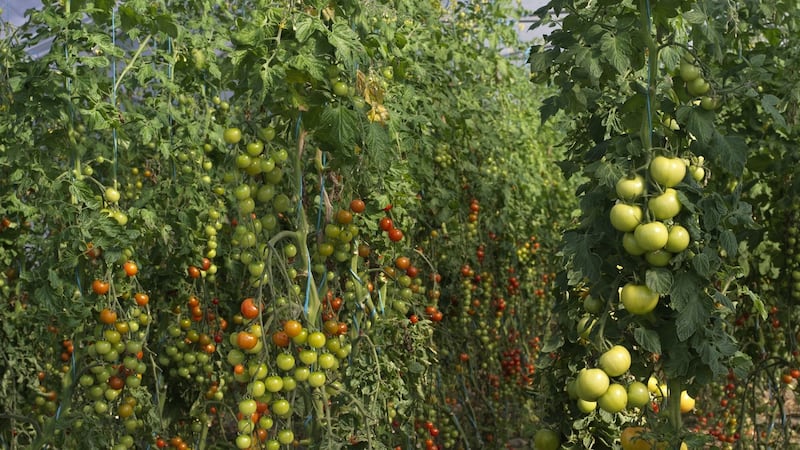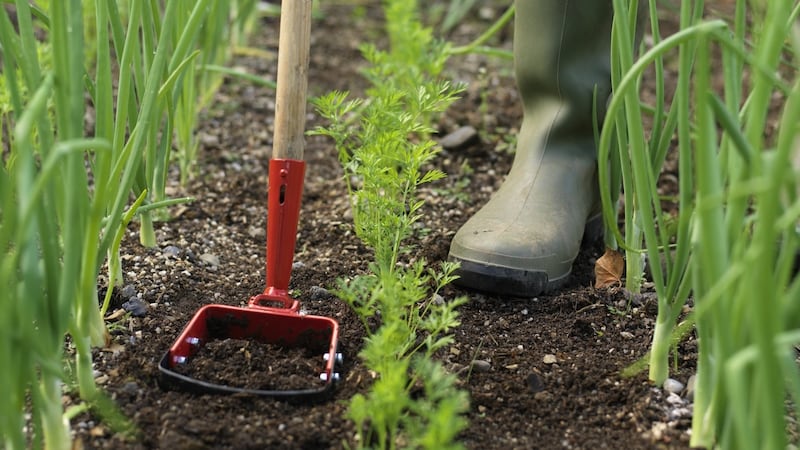It’s often said that we live in a visual age, our tastes shaped by a stream of images fed to us via traditional and social media.
If you're a gardener who uses Instagram, for instance, your current feed is probably filled with sumptuous shots of dinner-plate dahlias, sweet pea and blowsy roses, of kitchen gardens and allotments laden down with ripe fruit, vegetables and herbs.
All of it undeniably gorgeous, yes, but the one thing that even the loveliest of garden photos will never be able to convey is the seductive, evocative beauty of scent. No photo, for example, is going to let you know what it feels like to breathe in the intoxicating perfume of sweet pea in full bloom on a warm summer day. Or the fruity, almost camphorous scent of lavender.
You can stare at a photo of chocolate cosmos (Cosmos atrosanguineus) all you want but it’s never going to convey what it’s like to bury your nose in those soft, sooty-red flowers and inhale their rich, cocoa-vanilla fragrance.
Similarly, if you were to judge the garden-worthiness of a plant like lemon verbena (Aloysia citriodora) by its appearance alone, then it would never make it through the garden gate. But crush just a couple of its intensely fragrant, fresh leaves between your fingers and you’ll be instantly enveloped in a sweet, heady fug of perfume reminiscent of lemon bonbons.
True, not all garden plants smell equally delightful. Freshly-cut box hedging, for example, has a strong, somewhat acrid smell that some find painfully reminiscent of cat pee, the reason why England's Queen Anne banished the plant from the gardens of Hampton Court.
Others (myself included) can’t bear the pungent, bitter smell of the foliage of Mexican orange blossom (Choisya ternata). There are also plants that smell both good and bad in equal measure.
The late, great garden writer, Mirabel Osler, for example, admitted to loving the smell of fresh coriander while memorably describing it as having "a slight whiff of horse's urine". I love it too, yet can't help being faintly reminded of stale sweat.
Other plants smell appealing to some and off-putting to others, a fact brought home to me recently when a flower-farmer friend casually mentioned, to my surprise, how much she hated the “pong of turpentine” from the frothy white flowers of the pretty annual, Orlaya grandiflora.
But then I’m curiously fond of the foxy, almost sulphuric smell of crown imperials (Fritillaria imperialis) in full bloom, a smell so unlovely to some gardeners that they refuse to grow it despite the stately beauty of its spring flowers.
Sensory gardens
Similarly, if you like the smell of aniseed, then you’ll appreciate the strongly aromatic whiff of fennel plants on a hot summer’s day while if you’re a curry-lover you’ll enjoy the spicy scent of the curry plant (Helichrysum italicum ssp. serotinum). Yet I know gardeners who gag at both.
The many different smells of a garden, whether it’s the warm, earthy odour of damp soil after a sudden summer rainshower or the sweet tang of a rose in full bloom, have the power to stimulate our senses in other mysterious ways.
Each one is chemically unique, a complex mix of many different organic scent compounds that interact with several hundred odour receptors contained inside the nose to trigger a host of reactions deep within the brain’s limbic system, many of them associated with memory and emotions.

On a recent visit to the therapeutic and sensory gardens of St Mary’s Hospital in Dublin’s Phoenix Park, I learned how common garden plants including lavender, rosemary, mint, sage, fennel and scented pelargoniums can be used as therapeutic aids to trigger “lost” sensory memories from the past, something that’s especially beneficial to people suffering from dementia or memory loss.
That’s because, much like music, our sense of smell has the power to instantaneously transport us to another time and place. For me, the smells of catmint, lilac and wild raspberries will be forever associated with childhood, for another it will be the sweet tang of sun-warmed tomatoes and freshly cut-grass, or a privet hedge in summer bloom.
Whichever your personal favourites, to get the greatest olfactory enjoyment from plants with perfumed or aromatic flowers or foliage, try to grow them in a sheltered spot where you will pass by them frequently. For example, in a courtyard, against a wall, along a path, in a windowbox or near a gate or doorway.
Each season has its own scented stars; some of the floral greats of the summer garden include lavender, buddlejia, nicotiana, jasmine, sweet pea, roses, stock, chocolate cosmos, honeysuckle, actaea, philadelphus, heliotrope, star jasmine (Trachelospermum), phlox and day lilies.
Examples of plants with aromatic or perfumed foliage that most people enjoy include scented pelargoniums, basil, bay, eucalyptus, salvia, myrtle, lavender, monarda, santolina, artemisia, catmint, thyme, hyssop, rosemary and of course mint, of which there are many different kinds/varieties with subtly different smells. Examples of the latter include spearmint, apple mint (Mentha suaveolens), chocolate peppermint (Mentha x piperita f. citrata ‘Chocolate) and eau-de-cologne mint (Mentha x piperita f. citrata).
Note that I say “most people”. You may very well turn out to be the exception to the rule, the person for whom the smell of scented pelargoniums iconjures up dismal childhood memories of a rain-filled holiday stuck inside a damp farmhouse, or for whom the merest whiff of lilies makes you recoil in disgust.
Of course, you’ll never be able to tell any of this by simply looking at a photo. My advice? Don’t forget to do the all-important sniff-test before you plant.
This Week in the Garden
Keep indeterminate/cordon-type tomato plants in good shape by regularly nipping out any basal or side shoots as soon as they appear. Unlike the bush/training types, these taller growing tomatoes also need some form of strong support as the fruit begins to swell, ripen and weigh the plants down.
So train the stems onto strings tied from the roof of the glasshouse and then coiled gently around the stem of the plant, or alternatively tie individual stems gently onto a cane.

Once a sufficient number of trusses (the clusters of baby fruit) have set, you then need to ‘stop’ the plant by cutting off the growing point a couple of leaves above the uppermost set truss. This encourages the plant to put all its energy into the developing fruit rather than new growth.
As a general rule, allow six-eight trusses if growing in the ground, four-five if growing in containers.
Keep dead-heading/picking sweet pea flowers to encourage the production of lots of new blooms. A liquid feed every 7-14 days will also help to keep plants health and productive while container-grown plants in particular need to be kept well-watered.
Enjoy this
Yahay! It's dahlia time in many Irish gardens, giving us the chance to enjoy these exotically beautiful tuberous perennials in exuberant summer bloom. In particular, pay a visit to June Blake's garden in west Wicklow in the coming weeks as part of her 'A Month of Dahlias' celebration where you can enjoy the sight of hundreds of glorious species-type dahlias grown by June from seed.
Do so on any Sunday from now until August 25th and you can also enjoy a free garden tour, see juneblake.ie for details. Sibling gardener Jimi Blake’s beautiful country garden, Hunting Brook, situated just a stone’s throw away from June’s, is also known for its great collection of dahlias including many grown from seed collected in his garden or sourced from fellow dahlia-holics (huntingbrook.com )
Try this
Nip weed seedlings in the bud by hoeing them away before they have a chance to get properly established in paths, borders and beds. While there are many different kinds of hoes, very few are as effective as the Glaser oscillating hoe, which has a pivoting head that cuts away weeds both on the forward and backward stroke and is quick and supper-efficient to use.

Available in three different sizes, the narrowest head/blade (85mm) is fantastic for getting into tight spaces between border plants while the medium-sized blade (125mm) is a great all-rounder. Available to order from Cork-based Fruithill Farm (fruithillfarm.com) and Quick Crop (quickcrop.ie) along with lightweight ash handles.
Dates For Your Diary
Sunday August 4th (10am-5pm), Farmleigh, Phoenix Park, Dublin, Farmleigh Autumn Plant Fair & Farmers Market including stalls by many of the country's leading specialist plant nurseries, admission free, see farmleigh.ie.
Until August 12th, National Botanic Gardens, Glasnevin, 'For the Love of Trees', an exhibition of paintings of trees growing in Kilmacurragh gardens by the artist and designer Bill Fallover, see botanicgardens.ie.
Continuing until Monday August 5th, Carlow Garden Festival, with a host of well-known expert speakers/contributors ’ examples and a wide range of events including garden talks, workshops, tours, Q&A sessions, films and long table lunches taking place at different venues over the course of the festival, see carlowgardenfestival.com.












